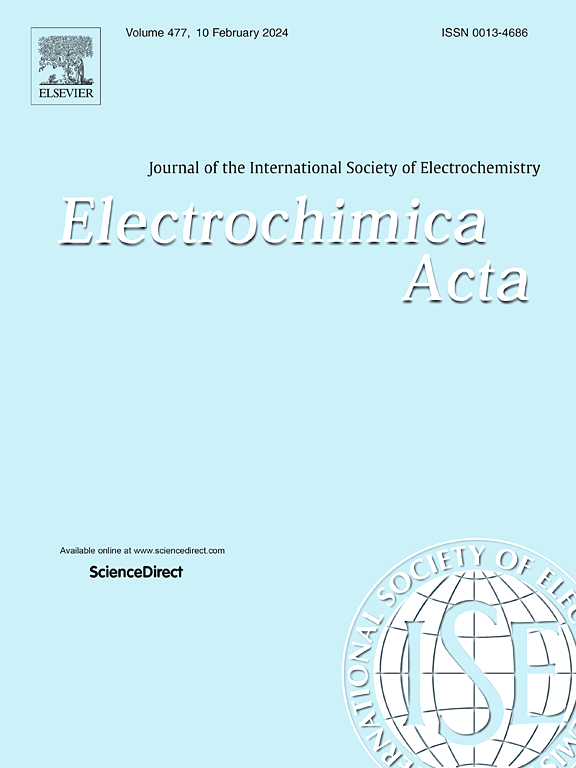在4.8 V高压下,LiNi0.8Co0.1Mn0.1O2阴极界面上加性诱导鲁棒界面对锂离子电池长期稳定性的影响
IF 5.5
3区 材料科学
Q1 ELECTROCHEMISTRY
引用次数: 0
摘要
富镍LiNi0.8Co0.1Mn0.1O2 (NCM811)材料有望成为下一代锂离子电池(LIBs)的正极材料。然而,NCM811的实际使用受到其在高压循环下结构不稳定性的限制。为了提高NCM811在高电压下的循环稳定性,我们提出了一种加性诱导策略,在电极表面形成一个鲁棒的界面。二氟磷酸锂(LiPO2F2, LiDFP)添加剂在电极表面的分解先于基线电解质。这种分解产生了一层薄而均匀的薄膜,称为阴极-电解质界面(CEI)。通过一系列的实验测试,发现LiDFP添加剂诱导的CEI膜可以有效地阻止电解液的分解,减轻阴极的应变和裂纹形成。在4.8 V电压下,100次循环后仍保持91.8%的高容量。这明显高于基线电解质观察到的73.3%的容量保留。LiDFP在电解质之前氧化和分解,形成坚固的CEI膜,减轻NCM811阴极应变/开裂,抑制过渡金属(TM)溶解,提高NCM811材料的稳定性。本文章由计算机程序翻译,如有差异,请以英文原文为准。
Additive-induced robust interphases on the interface of LiNi0.8Co0.1Mn0.1O2 cathode for long-term stability of lithium-ion batteries at high voltage of 4.8 V
Nickel-rich LiNi0.8Co0.1Mn0.1O2 (NCM811) material is anticipated to be the cathode material of the upcoming generation lithium-ion batteries (LIBs). Nevertheless, the actual use of NCM811 is limited by its structural instability under high voltage cycling. To enhance the NCM811 cyclic stability at a high voltage, we suggest an additive-induced strategy to create a robust interphase on electrode surface. The lithium difluorophosphate (LiPO2F2, LiDFP) additive decomposes on the electrode surface before the baseline electrolyte does. This decomposition creates a thin, uniform film known as the cathode-electrolyte interface (CEI). Through a series of experimental tests, it is found that the CEI film induced by LiDFP additive could effectively prevent electrolyte from decomposing and mitigate the strain and crack formation in the cathode. retains a high capacity of 91.8 % after 100 cycles at 4.8 V. This is significantly higher than the 73.3 % capacity retention observed with the baseline electrolyte. LiDFP oxidizes and decomposes before the electrolyte, forming a robust CEI film that mitigates NCM811 cathode strain/cracking, suppresses transition metal (TM) dissolution, and enhances NCM811 material stability.
求助全文
通过发布文献求助,成功后即可免费获取论文全文。
去求助
来源期刊

Electrochimica Acta
工程技术-电化学
CiteScore
11.30
自引率
6.10%
发文量
1634
审稿时长
41 days
期刊介绍:
Electrochimica Acta is an international journal. It is intended for the publication of both original work and reviews in the field of electrochemistry. Electrochemistry should be interpreted to mean any of the research fields covered by the Divisions of the International Society of Electrochemistry listed below, as well as emerging scientific domains covered by ISE New Topics Committee.
 求助内容:
求助内容: 应助结果提醒方式:
应助结果提醒方式:


